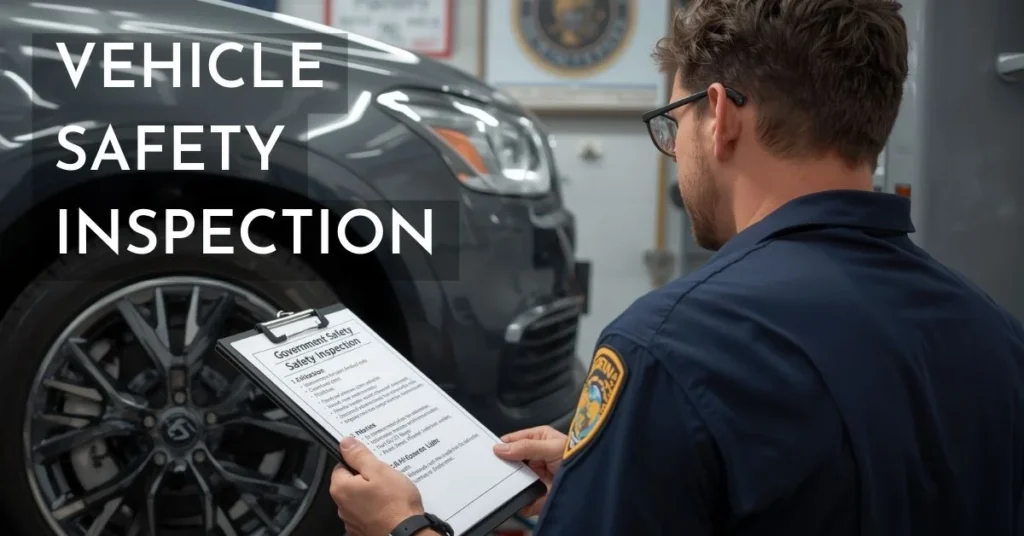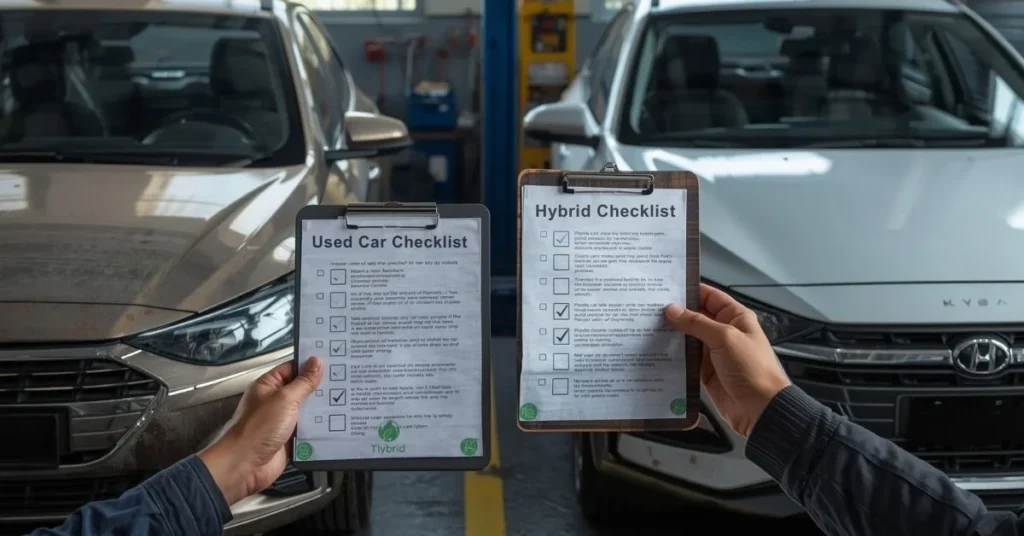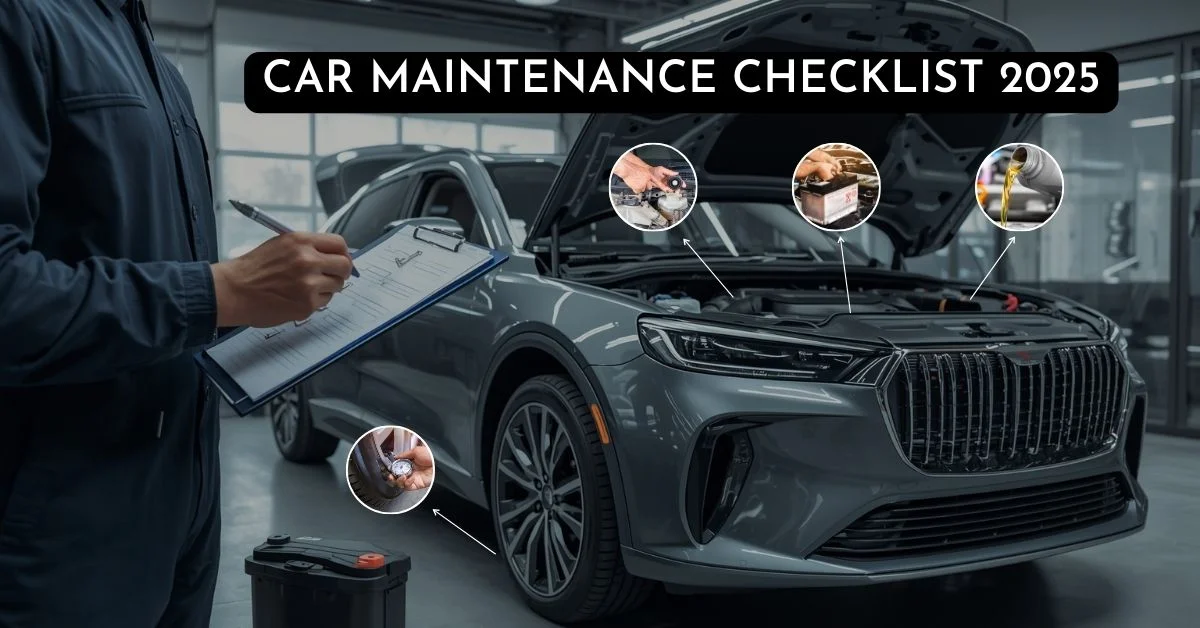Introduction
No matter the car you drive, a maintenance checklist becomes the guardrail between you and unexpected breakdowns. Keeping one handy saves you from pricey repairs and delivers that reassuring sense that you aren’t just hoping for the best, you’re working for it. The checklist starts with a safety inspection, where you glance over brakes, tires, fluids, and lights. If something weakens, you fix it. Many states skip mandating this step, no matter adopting the inspection ritual sharpens how your car handles and how safely it carries you.
Imagine the checklist as your co-driver whispering the right tasks. Monthly, you peek at the oil, battery, and wiper blades. Yearly, a mechanic checks the suspension and exhaust. Ride a brand-new sedan or a seasoned coupe, a tidy list spots the small stuff and the big stuff alike before it ever becomes the wrong kind of surprise.
What is a Car Maintenance Checklist?
A car maintenance checklist is a comprehensive way to track the regular inspections, services, and part swaps that keep a car performing its best, whether that means hitting the road safely, sipping fuel efficiently, or not throwing tantrums in the driveway. These lists often peg actions to how many miles have piled up, how many months have ticked by, or what season is breathing down the garage door—dollars and peace of mind not only appear in the absence of a roadside call, but also in a car that lasts long enough to sell for a fair price. While the breadth of the checklist can shift with the make, the model, and how the car is actually driven, most lists lean heavily on factory, association, and trusted shop wisdom.
Why Use a Car Maintenance Checklist?
- Safety: Regular checks on brakes, tires, and lights reduce accident risks.
- Cost Savings: Early detection of issues avoids expensive repairs.
- Performance: Proper maintenance improves fuel efficiency and handling.
- Warranty Compliance: Following schedules often preserves manufacturer warranties.
Car Maintenance Checklist
| Category | Frequency | Key Components | Purpose |
| Engine Oil | Every 3,000-5,000 miles | Oil level, oil filter, engine oil type | Keeps engine running smoothly, reduces wear and tear |
| Brakes | Every 10,000 miles | Brake pads, rotors, brake fluid | Ensures stopping power and safety |
| Tires | Monthly | Tire pressure, tread depth, rotation | Enhances safety, fuel efficiency, and tire longevity |
| Battery | Every 6 months | Battery charge, terminal corrosion | Ensures reliable starting and electrical system function |
| Air Filters | Every 12,000 miles | Engine air filter, cabin air filter | Improves engine efficiency and air quality inside the car |
| Belts and Hoses | Every 30,000 miles | Serpentine belts, timing belts, coolant hoses | Prevents breakdowns and keeps engine running |
| Fluid Levels | Monthly | Brake fluid, coolant, power steering fluid | Ensures smooth vehicle operation and prevents overheating |
| Lights and Indicators | Monthly | Headlights, taillights, brake lights, indicators | Enhances safety and visibility on the road |
| Wipers and Windshield | Every 6 months | Wiper blades, windshield fluid | Ensures clear vision during bad weather |
| Exhaust System | Every 12,000 miles | Exhaust pipes, catalytic converter | Reduces emissions, enhances fuel efficiency, and prevents rust |
| Transmission Fluid | Every 30,000 miles | Transmission fluid levels | Ensures smooth shifting and prevents transmission failure |

Vehicle Safety Inspection
A safety check on your car is a vital part of any list of things to do to maintain it in good shape. It keeps your car safe and helps you uncover problems that aren’t evident before they cost a lot to fix. During a standard inspection, mechanics look at the brakes, lights, steering, suspension, and exhaust systems. It’s not enough to just follow the regulations; you also need to feel safe behind the wheel.
You need to travel to an official inspection center for the formal check, but you may get ready ahead of time by utilizing a personal auto repair checklist to check the fluid levels, lights, and tire wear. Not only does regular maintenance make it simpler to pass inspections, but it also keeps your automobile safe on the road and makes it last longer.
| Inspection Area | What’s Checked | Why It’s Required |
| Brakes | Pads, rotors, brake lines | Ensures safe stopping power |
| Tires & Wheels | Tread depth, sidewall damage, alignment | Prevents blowouts & improves grip |
| Lights & Signals | Headlights, taillights, indicators, brake lights | Improves visibility & communication |
| Emissions | Exhaust system, catalytic converter, emissions levels | Reduces pollution (required in many states) |
| Suspension & Steering | Shocks, struts, ball joints, tie rods | Maintains handling and stability |
| Windshield & Wipers | Cracks, wiper function, washer fluid | Improves visibility in all weather |
| Seatbelts & Airbags | Functionality of safety restraints | Protects occupants in case of accidents |
Step-by-Step Car Repair and Maintenance
Regular maintenance on your car can make it last longer, make it safer, and keep it from breaking down and costing you a lot of money. The basics you gave me are a terrific start. I’ll add to them with validated actions, advice, and more important checks to make a complete checklist. Always check the owner’s manual for your car to find out how to do things that are special to your model.
How to Check Oil in Your Car
Checking engine oil is crucial to prevent engine damage from low levels or dirty oil. Perform this monthly or before long trips.
- Park your car on level ground and let the engine cool for at least 5-10 minutes (or check when cold for accuracy).
- Locate the dipstick (usually marked with a bright handle in the engine bay).
- Pull out the dipstick, wipe it clean with a rag or paper towel, reinsert it fully, and remove it again.
- Check the oil level: It should be between the “min” (or “low”) and “max” (or “full”) marks. If low, top up with the recommended oil type through the oil filler cap—add small amounts and recheck to avoid overfilling.
- Also inspect the oil’s color and consistency: Fresh oil is amber; dark or gritty oil may need changing.
If the level is consistently low, it could indicate a leak—consult a mechanic.
How to Check Your Car Battery
A healthy battery ensures reliable starts and powers electrical systems. Test it every 3 months, especially in extreme weather, as part of vehicle battery maintenance.
- Ensure the car is off and parked safely. Wear gloves and eye protection.
- Use a digital multimeter set to DC volts (20V range): Connect the red probe to the positive (+) terminal and the black to the negative (-).
- Read the voltage: A fully charged battery should show around 12.6 volts at rest (engine off). If it’s 12.4 volts or below, recharge or replace it. With the engine running, it should read 13.7-14.7 volts (indicating the alternator is charging properly).
- Inspect terminals for corrosion (white, powdery buildup): Clean with a baking soda and water solution, rinse, dry, and apply petroleum jelly to prevent recurrence.
- Check for physical damage like cracks or leaks.
How to Check Car Fuses
Fuses protect electrical circuits from overloads. If something like lights or the radio stops working, check fuses before deeper diagnostics.
- Locate the fuse box: Common spots are under the dashboard, in the engine compartment, or trunk—refer to your owner’s manual for the diagram.
- Turn off the ignition and any affected accessories.
- Pull out the suspected fuse using fuse pullers (often in the box) or pliers.
- Inspect it: Look for a broken wire or blackened glass inside. For blade fuses, check if the metal strip is intact.
- If blown, replace with a new fuse of the exact same amp rating (color-coded; e.g., 10A red). Never use a higher rating, as it risks fire.
- Test the circuit after replacement.

Used Car & Hybrid Car Maintenance
It takes extra care to keep hybrid autos in good shape. Hybrid owners need to pay attention to more than just the usual things like oil, filters, and brakes. They also need to pay attention to the health of the battery and the cooling systems. Hybrid cars use both fuel and electricity, which can make their systems complicated. This makes it even more vital to get them checked by a specialist. Regular maintenance not only makes the battery last longer, but it also makes the car use less gas.
If you want to be sure your automobile gets the right care, get a professional to fix and maintain it, whether it’s a secondhand car or a hybrid. Skilled workers employ diagnostic instruments to find problems early, which keeps everything running smoothly and avoids failures. Both old and hybrid automobiles need to follow a stringent car maintenance checklist to make sure they are safe, work well, and last a long time.
| Inspection Area | Normal Car Checklist | Hybrid Car Checklist (Different/Additional) |
| Battery | Check 12V battery health | Check 12V battery + High-voltage hybrid battery |
| Cooling System | Radiator & coolant check | Hybrid battery cooling system & fans inspection |
| Brakes | Standard brake pads, rotors | Regenerative braking system performance check |
| Powertrain | Engine oil, transmission check | Engine + electric motor synchronization diagnostics |
| Electronics | Basic electrical fuse check | Inverter & hybrid electrical systems inspection |
| Emissions | Standard emissions test | Hybrid-specific emission control systems scan |
Car Battery Maintenance
Your car battery is the heart of your vehicle’s electrical system, powering everything from the ignition to lights and infotainment. Without proper car battery maintenance, you risk sudden breakdowns, poor performance, and costly car repair and maintenance bills. Taking care of the battery ensures reliability, longer lifespan, and peace of mind on the road.
- Regular Inspection – Check the battery monthly for corrosion, loose cables, or dirt buildup.
- Clean Terminals – Use a baking soda and water mix to clean corrosion and improve connections.
- Check Voltage – A healthy battery should read around 12.6 volts when fully charged.
- Avoid Short Trips – Short drives don’t let the alternator recharge the battery fully.
- Replace on Time – Most batteries last 3–5 years, so replace before complete failure.
Conclusion
A well-structured car maintenance checklist is not just about keeping your vehicle clean – it’s about safety, reliability, and saving money in the long run. From regular inspections to car battery maintenance, oil checks, tire pressure monitoring, and hybrid car care, each step plays a vital role in avoiding costly repairs. Whether you’re maintaining a used car or ensuring proper hybrid car maintenance, following a consistent routine backed by professional guidance from a career maintenance technician ensures your vehicle stays in top shape.Want to dive deep into ignition coil symptoms, testing techniques, replacement steps, and cost breakdowns? Read our complete Ignition Coil Guide now.
Frequently Asked Questions
-
How often should I follow a car maintenance checklist?
Most experts recommend a basic inspection every month and a full service every 6 months or 5,000–7,500 miles.
-
What is the most important part of car repair and maintenance?
Oil changes, car battery maintenance, and brake inspections are the most critical for safety and performance.
-
Why is a used car checklist important?
It helps you identify hidden problems like worn-out parts, leaks, or battery issues before making a purchase.
-
How do I maintain a hybrid car differently from a regular car?
Hybrid cars need extra care for the battery system, cooling system, and regenerative braking, compared to normal cars.
-
How do I know when my car battery needs replacement?
If your car struggles to start, headlights dim, or the battery is over 3–5 years old, it’s time for replacement.

